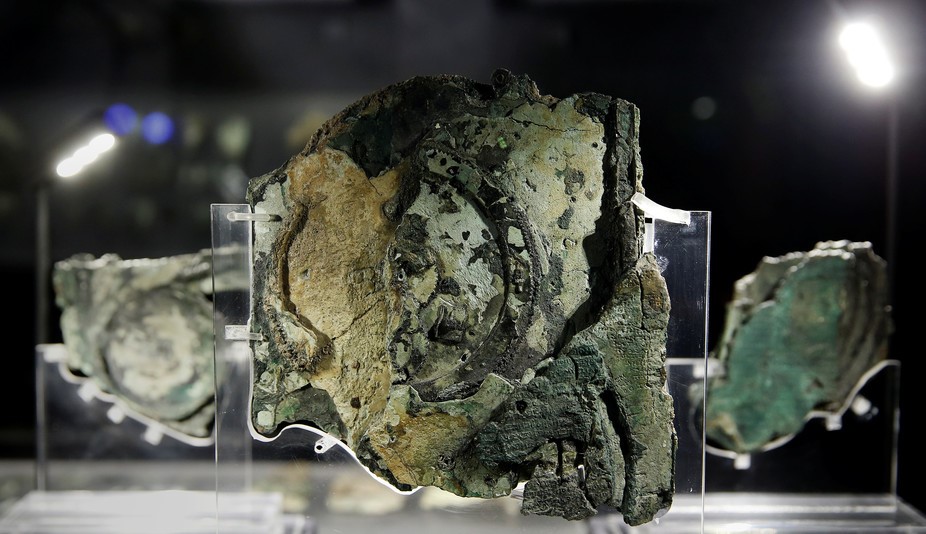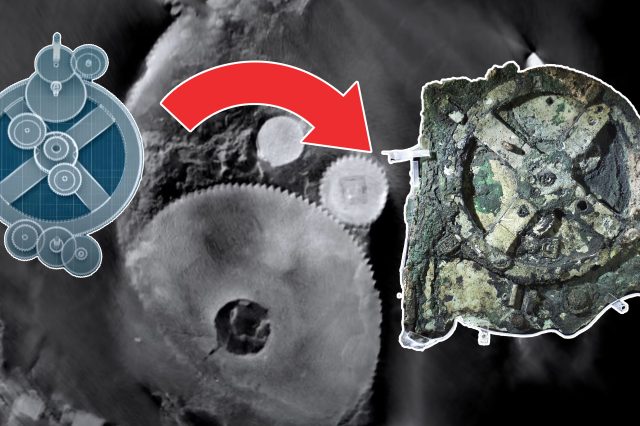This is the world's oldest computer, and it dates back to between 150 and 100 BC.
A Mysterious Marvel of the Ancient World
An enigmatic artifact, the Antikythera Mechanism has piqued the curiosity of historians, archaeologists, and engineers for more than a century. Dubbed the world’s first computer, this fascinating piece of technology defies expectations of what our ancestors were capable of. Here are ten captivating facts about the Antikythera Mechanism, shedding light on the secrets of this ancient marvel.
Unearthing a Treasure: The Discovery of the Antikythera Mechanism
In 1901, divers off the coast of Antikythera, a small Greek island, stumbled upon a sunken Roman ship filled with artifacts. Among these treasures was the Antikythera Mechanism, a corroded and seemingly unremarkable lump of bronze. Little did they know that they had just discovered an ancient marvel that would baffle experts for decades.
The World’s First Computer: Understanding the Antikythera Mechanism’s Function
We know for a fact that the Antikythera Mechanism is a complex assembly of gears, dials, and pointers. Despite its age, it is an incredibly advanced device used to predict the movements of celestial bodies, and eclipses. This ancient computer could track planetary positions, a feat that remained unparalleled for over a thousand years.
A Testament to Ancient Greek Ingenuity: The Antikythera Mechanism’s Origins
Radiocarbon dating and historical analysis indicate that the ancient computer was created between 150 and 100 BC. This astonishing piece of technology is a testament to the ancient Greeks’ prowess in mathematics, astronomy, and mechanical engineering.
Deciphering the Enigma: The Antikythera Mechanism Research Project
In 2005, the Antikythera Mechanism Research Project (AMRP) was formed to uncover the secrets of this ancient marvel. Using cutting-edge technologies like X-ray computed tomography (CT) scans and 3D imaging, researchers have been able to study the mechanism’s intricate inner workings and better understand its capabilities.
A Glimpse into the Past: Inscriptions on the Antikythera Mechanism
The mechanism is adorned with inscriptions in ancient Greek, acting as a user’s manual for the device. These inscriptions have helped researchers understand the mechanism’s functions and provided insight into the sophistication of ancient Greek astronomy and mathematics. The mechanism comes in a wooden casing that has a front and back door. Both of these doors have inscriptions, and it is widely believed that the back door serves as an instructional guide for the device. One of the fragments on this door bears the inscriptions “76 years, 19 years,” which relate to the Callippic and Metonic cycles, while the inscription “223” represents the Saros cycle.
Inspired by the Greats: The Influence of Archimedes and Hipparchus
The Antikythera Mechanism’s design is believed to have been influenced by the work of great ancient Greek scientists like Archimedes and Hipparchus. Some scholars even propose that Hipparchus, known for his astronomical observations and trigonometry, could have been directly involved in the mechanism’s creation.
Lost Knowledge: The Mechanism’s Complexity Unmatched for Centuries
The Antikythera Mechanism’s sophistication remained unparalleled until the development of mechanical astronomical clocks in the 14th century. The knowledge and expertise required to create such a complex device were seemingly lost after the fall of the Roman Empire. This raises questions about the extent of ancient technology and the potential advancements that were lost to history.
The Antikythera Mechanism’s Siblings: Are There More?
Although the Antikythera Mechanism is one of a kind, experts believe that it may not have been the only device of its type. Fragments of similar devices have been discovered, suggesting that ancient Greek and Roman workshops could have produced multiple mechanisms. The search for these potential siblings continues, offering the tantalizing possibility of uncovering more ancient technological marvels.
Replicating the Past: Modern Reconstructions of the Antikythera Mechanism
In recent years, engineers and historians have collaborated to create fully functional replicas of the Antikythera Mechanism and understand the facts. These reconstructions not only showcase the incredible ingenuity of the ancient Greeks but also provide valuable insights into how the original mechanism would have operated.
A Lasting Legacy: The Mechanism’s Impact on Modern Technology
The mechanism has inspired countless scientists, engineers, and historians, igniting a passion for understanding the ancient world’s technological achievements. Its legacy can be seen in modern astronomical devices, computer programming, and the field of mechanical engineering, proving that the secrets of the past continue to shape the innovations of today.
The ancient computer remains an enigmatic artifact that offers a tantalizing insight into the technological advancement of ancient cultures. The Antikythera Mechanism is considered a significant archaeological discovery because it challenges the notion that the ancients lacked advanced technological knowledge.
PLEASE READ: Have something to add? Visit Curiosmos on Facebook. Join the discussion in our mobile Telegram group. Also, follow us on Google News. Interesting in history, mysteries, and more? Visit Ancient Library’s Telegram group and become part of an exclusive group.




